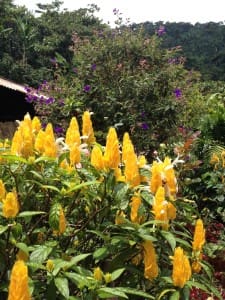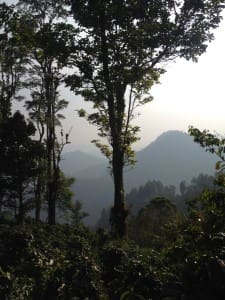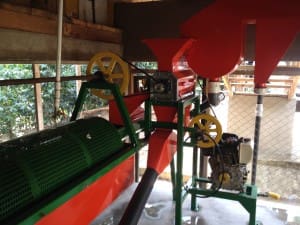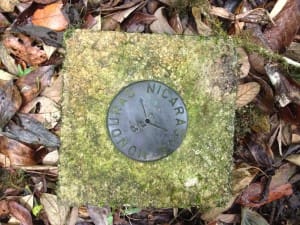Each spring we take a group of buyers to Ocotal, Nicaragua to visit the farms of Luis Alberto Balladarez, Mario Vilchez and the Lovo family, and cup incoming samples from the new harvest. We took a group of 10 people there during the last week of April to see what this year’s harvest had to offer. I continue to be impressed not only with the dedication to quality of the producers that we work with there, but the continuing drive to innovate, experiment and find what plantings and processing techniques truly produce the best results.
While coffee leaf rust (la roya) remains a threat to coffee production in Nicaragua, the introduction of more resistant varieties along with diligent efforts to manage the disease with applications of fungicides and other techniques have enabled concerned producers to keep the fungus in check. Arguably a bigger challenge is the fact that Nicaragua has struggled with three years of drought and increasingly unpredictable weather as a result of climate change. In the past, predictable weather patterns ensured routine flowering and even ripening of cherry. Unfortunately, due to current circumstances it is common to find coffee plants that have flowers, tiny developing cherries, full-size green cherries, red cherries, and dried-on-tree cherries on the very same plant. This significantly complicates the harvest and leads to lower yields. While yield seemed to be lower this year across the board, we were pleased to find that quality has remained high.
First on our itinerary was a visit to Luis Alberto Balladarez’ farms in the Mozonte sub-region. For years we have brought in coffee from the sister farms of Un Regalo de Dios and La Esperanza, but were surprised to learn that Luis Alberto had recently acquired a third farm in the same valley, Finca Vista Bella. It is still early in its renovation process, but there are 15 manzanas (around 26 acres) currently planted with Bourbon and SL-28, with 5 more manzanas to be added this year. We expect great things to come from this new farm.

Mario Vilchez, owner of Fincas Santa Gema, Escondida, and Santisima, also acquired a new farm called La Excelencia. Mario is perpetually reinvesting is his farms to make improvements, like new housing for seasonal workers and better tanks and channels for washing. This year he was keen to show the upgrades to his wet mill – a new system that includes a mechanical syphon for sorting cherries before de-pulping, a larger and more efficient de-pulper, and a horizontal screen drum called a criba for removing undersized cherries. These upgrades will allow him to significantly speed up processing and create cleaner coffee with less broken beans that need to be sorted out prior to export.
We spent the third day of our trip with the Lovo family, visiting Fincas La Pradera, Bella Aurora, and Santa Teresa. These farms are located in Dipilto, which in general has always struck me as a very lush sub-region of Nueva Segovia. The flowers and ample bird life in these three farms in particular have always seemed garden-like to me. I had always been told that the mountain ridge at the top of La Pradera formed the border with Honduras, but on this occasion we took a hike up to a new area of planting above 1600 meters that is called Tercere Base. A staunch advocate of the workhorse Caturra cultivar, Luis Joaquin Lovo has planted this area with Red Catuai which he says grows faster and produces more volume with better quality at altitudes above 1600 meters . While visiting this new planting we took a side trip to see the Honduran border for ourselves.


